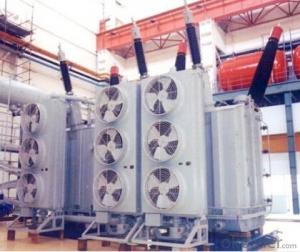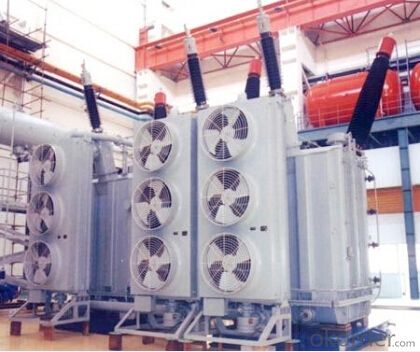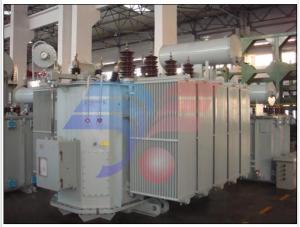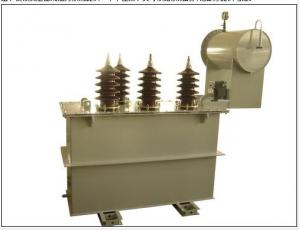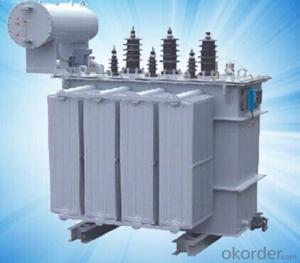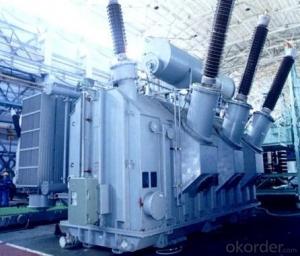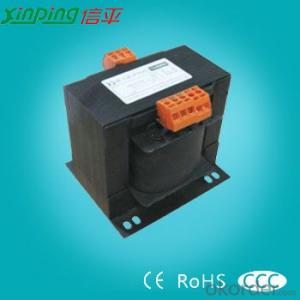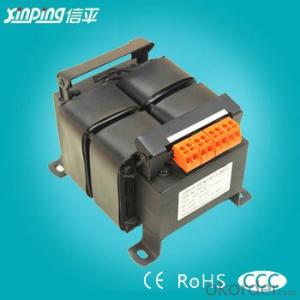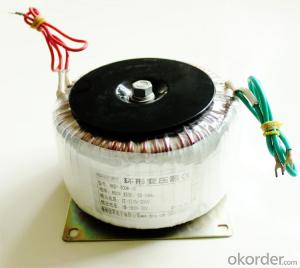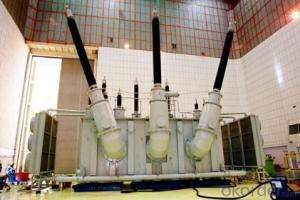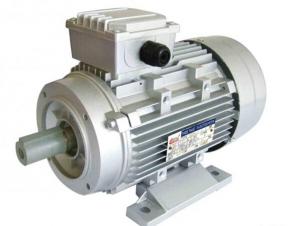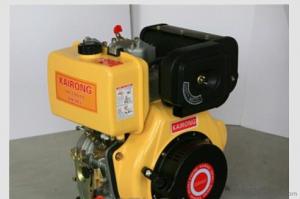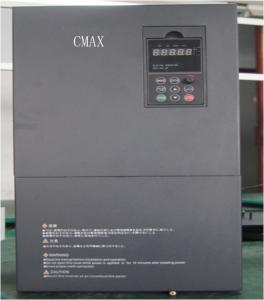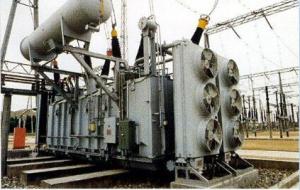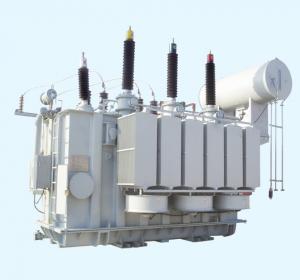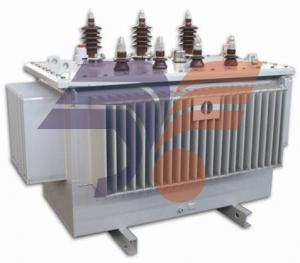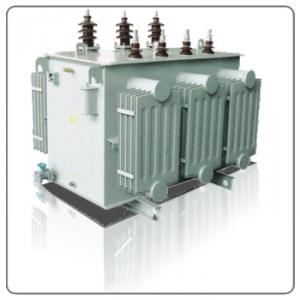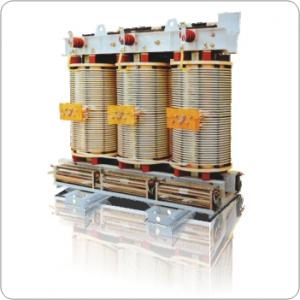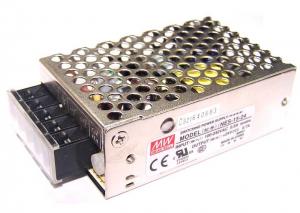150MVA/345kV three phases self coupling generator interconnection transformer
- Loading Port:
- Tianjin
- Payment Terms:
- TT OR LC
- Min Order Qty:
- 1 pc
- Supply Capability:
- 1 pc/month
OKorder Service Pledge
OKorder Financial Service
You Might Also Like
Quick Details
| Place of Origin: | HeBei | Brand Name: | CNBM | Model Number: |
|
| Usage: | Power | Phase: | one | Coil Structure: | Toroidal |
| Coil Number: | 2 Winding | Capacity: | Rated Voltage: | 150MVA/345kV | |
| Connection Symbol: | YNd11 Dyn11 YNyn0d11 | Tank: | Cover type or Bell type | OLTC: | MR or ABB or SMS |
Packaging & Delivery
| Packaging Detail: | Mainbody --naked Disassembled parts -- crate |
| Delivery Detail: | 3 months |
Specifications
1. CESI certificate
2. High short-circuit withstand
3. Low loss, PD and noise
4. CTQC certificate
5. No leakage
Description
The application of the 150MVA/345kV three phases self coupling generator interconnection transformer.can significantly improve the economy of the OLTC substation, and matches well with the transmission capacity of OLTC lines, which has wide prospect of application. Because of its large capacity and large volume, the whole transportation weight with nitrogen is about 470-490 tons, and due to the restricted transport conditions, the transportation becomes the critical issue for the 150MVA/345kV three phases self coupling generator interconnection transformer. In order to make the products applicable to any OLTC substation in our country, the state grid of corporation of China set the "A study of easy-transport large capacity OLTC Transformer” as a key scientific research projects, and entrusted BTW to carry out the research.
During the process of research and development, BTW adopted the advanced design technology and modular design, the transformer can be transported disassembly and with advantages of compact core and winding body, less transportation weight and low transportation cost, effectively solves the need of OLTC construction in the transportation restricted areas. By using the most advanced 3D magnetic field calculation software, BTW performed detailed analysis and calculation for the magnetic flux leakage and eddy current loss of the transformer coil, iron core and oil tank steel structures. Besides, by using of the advanced electric field calculation software, BTW performed detailed analysis and calculation of main longitudinal insulation, and mastered the arrangement of the main longitudinal insulation of large capacity OLTCtransformer and the control of distribution of winding magnetic flux leakage. All of which make the products with low loss, low noise, small volume, strong anti short circuit ability, no local overheating and other significant advantages, and guarantee the long-term safe and stable operation.
The world's first on-site assembled large capacity OLTC Transformer’s right at the first time once again filled the gap in the field of OLTC transformer research after Chinese transformer industry overcame the difficulty of integral transport of the 150MVA/345kV three phases self coupling generator interconnection transformer, which marks BTW has fully occupied the world transformer industry technical peak. The successful development of the product filled the gaps in the domestic technology and met the urgent need of OLTCconstruction application in our country, greatly improved the technical level and manufacturing ability of BTW in terms of OLTC Transformer products.
- Q: What is the transformer through the full and half through the problem, the definition of a little more, the best reference, or sent to my literature.
- (4) Splitting coefficient: The ratio of split impedance to crossing impedance. The description of the method of the standard method shows that the commutation reactance measurement of the rectifier transformer is similar to that of the transformer short-circuit impedance measurement. The difference is that the measurement of the short-circuit impedance is usually made by connecting the low-voltage side of the transformer and the high-voltage side to the rated current, And the commutation reactance measurement of the rectifier transformer is to short-circuit the high-voltage side and to measure the voltage between the terminals at the low-voltage side with the rated single-phase current. It can be seen that the commutation reactance of the split transformer is a half-crossing impedance.
- Q: A 120 kVA, 7000/277 V (What does this rating mean) distribution transformer has the following resistances and reactances: Rp 5.5 ohms Xp 6.5 ohms Rs 0.007 ohms Xs 0.008 ohms Rc 55 kohms Xm 15 kohms The excitation branch impedance are given referred to the low voltage side of the transformer: a) What's the equivalent circuit of the transformer referred to the low voltage side b) What's the the per unit equivalent circuit c) Assume that this is supplying rated load at 277V and 0.89 lagging power factor, What is the transformer input
- 120 kVA, 7000/277 V (What does this rating mean) Primary voltage rating: 7000 V, secondary voltage rating: 277 V, rated load: 120 kVA It is unclear whether this is a single-phase or three-phase transformer. You probably need to assume it is single-phase. The equivalent circuit of a 3-phase transformer is analyzed as one of three single-phase transformers that could be connected to make the equivalent Y-Y three-phase transformer. The secondary voltage, 277 V, is the line to neutral voltage for a 480 V, wye distribution system. That is a USA standard system voltage. The primary would be 12,124 V L-L, 7000 V L-N. That would a reasonable primary distribution system voltage. Referring the circuit to the low side means changing the primary component values to the equivalent secondary values and moving the ideal transformer to the primary side of the circuit as shown below. To change the primary impedance values, multiply by (Sec V/Pri V)^2.
- Q: i have been looking at transformers and i wanted to know a few things. will they do dc current? do they just add x amount of volts or do they multiply by x or just change to x? also there is a sort of container that goes around them is that carbon???? it goes all the way around and then through
- will they do dc current? No o they just add x amount of volts or do they multiply by x or just change to x? A transformer does not give you power. what it does is change the voltage in an inverse proportion to the current ( you get more voltage, you get less current) also there is a sort of container that goes around them is that carbon? They can be, most of the time it is steel though. unless you work at a power plant or sub station, then you might see some transformers that have carbon cases.
- Q: Actually both amplifies the input voltage. A step up transformer amplifies the input voltage and a transistor also amplifies. So what is the differece????
- Easy. A transistor is a semi conductor that can essentially function as an on-ff switch. On certain configurations, you can use a transistor circuit with the right driving voltages to function as an amplifier/ Where as a transformer, is an active lumped circuit element which composed of wound coils, and ferromagnetic elements as a core which steps up or down the voltage of an electrical current by mutual induction. The principles behind both are VERY different, both in function, understanding and operation. Hope I helped some :)
- Q: I really want a better transformers than 4 1 was great 2 was crap 3 good 4 worst of them all
- Unfortunately, there probably will be
- Q: Current and Potential transformers both are actually Instrument transformers, which step down or lower down the values of current and voltages for measuring purposes.But I have heard of that both CT and PT specifically are used for stepping up current and voltages at some point of transmission system.if this is correct then can anyone tell where they are used?If not then there are step up transformers for similar uses but my question is why they are not called as CT's or PT's.
- Assume the source is our normal house electric supply. Assume that the following loads will work safely for the two voltages. Case 1. The load is impedence type. Then Power is Voltage^2/impedence. Example is our heater load. Hence by manupulation of the impedence, we can manupulate the power output. Case 2. Assume it is a constant horse power motor load similar to our fridge. Adjustment of voltage will not alter the power output. The power output will be entirely decided by the load horse power. But an increase voltage will reduce the input current, there by reducing the heat loss in the load.
- Q: I am learning about transformers and one of the items to calculate is the impedance. I need to calculate regular 60 Hz Core and Coil Shell Type Transformers Al wire in secundary, Cu Wire primary and use Epoxy paper for insulation.
- It's pretty difficult to calculate the impedances (there's more than one) entirely from the transformer's design data. It's easier and more usual to decide on an equivalent circuit (there are plenty available depending on how well you want to model the transformer) and then to determine the parameters by a mix of calculation and measurement. A pretty basic equivalent circuit which refers all impedances to the primary side, has the primary terminals connected first by Xm and Rc in parallel (the magnetising reactance and core loss resistance) and then by a third parallel branch containg a series connection of leakage reactance Xl, winding resistance Rw and an ideal transformer of turns ratio Np/Ns. Xm is best obtained from an open circuit test but could be calculated as the inductance of the primary winding. For the latter you'd need to know core dimensions, number of winding turns and the magnetising characteristic of the core iron. If you have conductor sizes and conductivities you can calculate the winding resistance Rw, referring the secondary part to the primary by multiplying it by (Np/Ns)?. You can deduce Rc from the losses measured on open circuit at nominal voltage and Rw from dc resistance measurements on the windings. If you know the specific hysteresis and eddy current losses of the core material, you can also have a good stab at calculating Rc. The leakage reactance is quite difficult to calculate from first principles - even designers usually resort to some empirical factors. Basically it's determined from the short circiut test which is at nominal secondary current. The ratio of primary volts to secondary surrent (referred of course) on secondary short circuit will get you close to Xl - you can adjust for Rw which can be determined from the losses on short circuit (core losses are absent here!) or by the two methods indicated above. It's normally Xl that's referred to as the transformer reactance and together with Rc and Rw, the impedance.
- Q: Where is the transformer used?
- Transformers are suitable for applications where the voltage level is to be changed Need to change the impedance to match the front and rear impedance of the occasion It is necessary to increase the current supply as a booster
- Q: hello thank you for reading this question, i have a iron cored dc-ac transformer (relies on interrupter to constantly break circuit to induce induction in secondary coil) a brief and crude diagram can be found
- If I understand correctly, you want to turn an old transformer into an electromagnet, and you want to use both windings in order to get the strongest possible field. First of all, you are going to need to modify the core: It needs a gap. In a perfect transformer, the lines of magnetic force would be entirely confined to the core.
- Q: can the amps rate be increased by using transformer from 10amps to 120amps.
- If you mean a 10 amp transformer, I hope you like the smell of burning insulation. However, you could re-wind the transformer to use one twelfth the number of secondary turns, using wire with twelve times the cross sectional area.
Send your message to us
150MVA/345kV three phases self coupling generator interconnection transformer
- Loading Port:
- Tianjin
- Payment Terms:
- TT OR LC
- Min Order Qty:
- 1 pc
- Supply Capability:
- 1 pc/month
OKorder Service Pledge
OKorder Financial Service
Similar products
Hot products
Hot Searches
